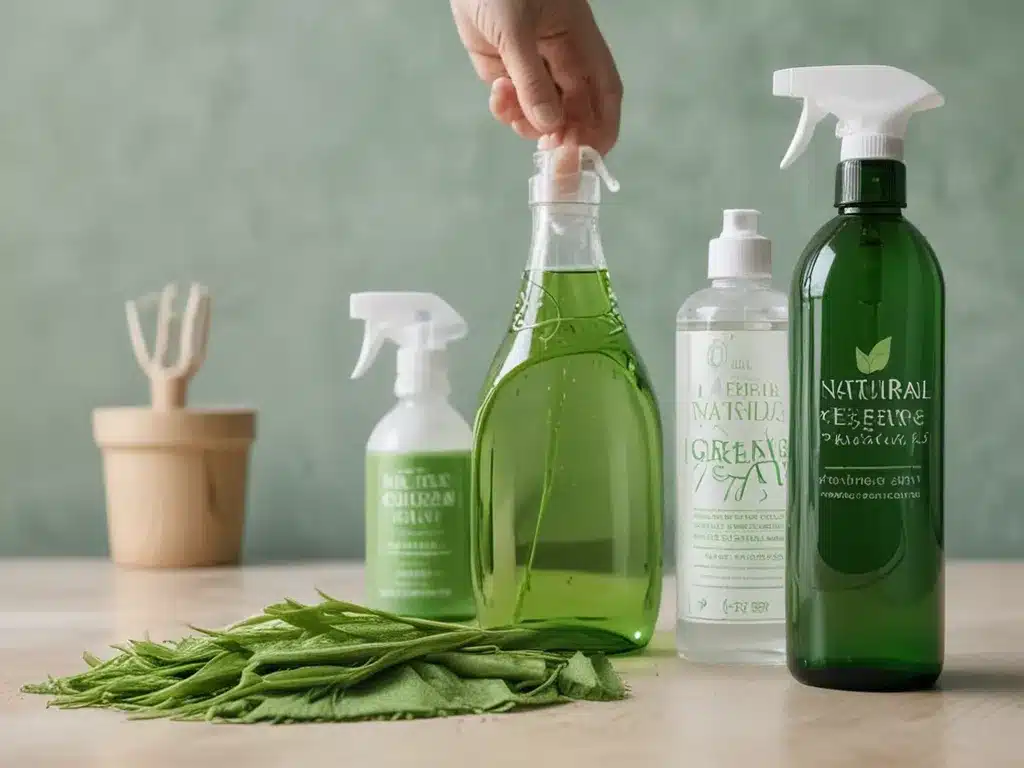Why Green Cleaning Matters
Green cleaning uses environmentally friendly cleaning products and practices to reduce the health and environmental impacts of cleaning. Here’s why green cleaning is important:
Improves Indoor Air Quality
Conventional cleaning products often contain toxic chemicals like ammonia, chlorine, and formaldehyde that can irritate eyes and airways, exacerbate asthma and allergies, and even cause long-term health issues like cancer with prolonged exposure. I switched to green cleaning to improve the indoor air quality in my home and protect my family’s health.
Reduces Environmental Pollution
Many conventional cleaning chemicals get washed down the drain and pollute waterways. Phosphates in detergents promote algal blooms, chlorine bleaches are toxic to aquatic life, and ammonia harms ecosystems. Using natural cleaning products prevents these chemicals from being released into the environment.
Avoids Exposure to Harmful Ingredients
Bleach, ammonia, phthalates, and other chemicals found in conventional cleaners have been linked to asthma, allergies, hormone disruption, and even cancer. Green cleaning avoids these hazardous ingredients, reducing your exposure to toxins.
Creates a Healthier Home
By reducing indoor air pollution and using non-toxic products, green cleaning promotes better indoor environmental quality. This creates a healthier home for you and your family.
How to Green Clean Your Home
Switching to green cleaning is easy! Here are my tips for greening your home cleaning routine:
1. Replace Conventional Cleaners
-
Replace chemical-laden cleaners like bleach, ammonia, and antibacterial sprays with eco-friendly alternatives. Look for plant-based ingredients and non-toxic certifications like Safer Choice and EPA Design for the Environment.
-
For laundry, swap conventional detergents for plant-based, phosphate-free detergents. Try brands like Seventh Generation, Mrs. Meyer’s, and Method.
-
Trade chemical disinfectant wipes and sprays for natural options like hydrogen peroxide or vinegar-based wipes. They kill germs without harsh fumes.
2. Make Your Own Cleaners
Many green cleaners can be easily homemade with simple ingredients like:
-
Baking soda – Deodorizes and cleans many surfaces. Scours without scratching.
-
White vinegar – Disinfects and deodorizes. Removes grease and soap scum.
-
Lemon – Cuts through grease and freshens laundry. Disinfects and deodorizes.
-
Hydrogen peroxide – Disinfects surfaces. Whitens tile grout.
3. Use Safer Cleaning Tools
Replace old tools that harbor dirt and germs with new tools designated for natural cleaners:
-
Dedicate spray bottles just for DIY cleaners. Label them clearly.
-
Use microfiber cloths and mops which are machine washable and don’t hold onto dirt.
-
Try steam mops and vacuums to sanitize floors without chemicals.
4. Improve Ventilation
Open windows, use fans, and run ventilation systems like exhaust fans and air purifiers during and after cleaning. This removes lingering fumes and allows fresh air in.
When to Use Natural Cleaning Products
Here is my guide on when to use green cleaners for different areas in your home:
Kitchen
- Use plant-based degreasers on stovetops, ovens, microwaves, and sinks. Baking soda also works.
- For the fridge, swap chemical cleaners for baking soda and water or vinegar solutions.
- On granite countertops, clean with dish soap and water rather than harsh chemical sprays.
- For stainless steel, rub a paste of baking soda and water on with a microfiber cloth to make appliances shine.
Bathroom
- Scrub toilets with a baking soda paste and toilet brush. For tough stains, let vinegar or hydrogen peroxide gel sit.
- Remove soap scum and mildew on tile with either vinegar and water or a hydrogen peroxide spray.
- For mold prevention in the shower, spray tea tree oil mixed with water on surfaces after showering.
Floors
- On vinyl, tile, and sealed hardwood, mop with a vinegar and water solution. For unfinished wood, use soap and water.
- Sprinkle baking soda on carpets and rugs and let sit 15 minutes before vacuuming up odors, dirt, and stains.
Laundry
- Pretreat stains with baking soda paste or diluted white vinegar. Use plant-based detergent and white vinegar in place of fabric softener.
- For whites, add lemon juice or hydrogen peroxide to brighten clothes without bleach.
Switching to green cleaning improves your home’s air quality and your family’s health. By replacing harsh chemicals with natural ingredients, you can clean your entire home safely and easily. Give these tips a try for a cleaner, greener home.







